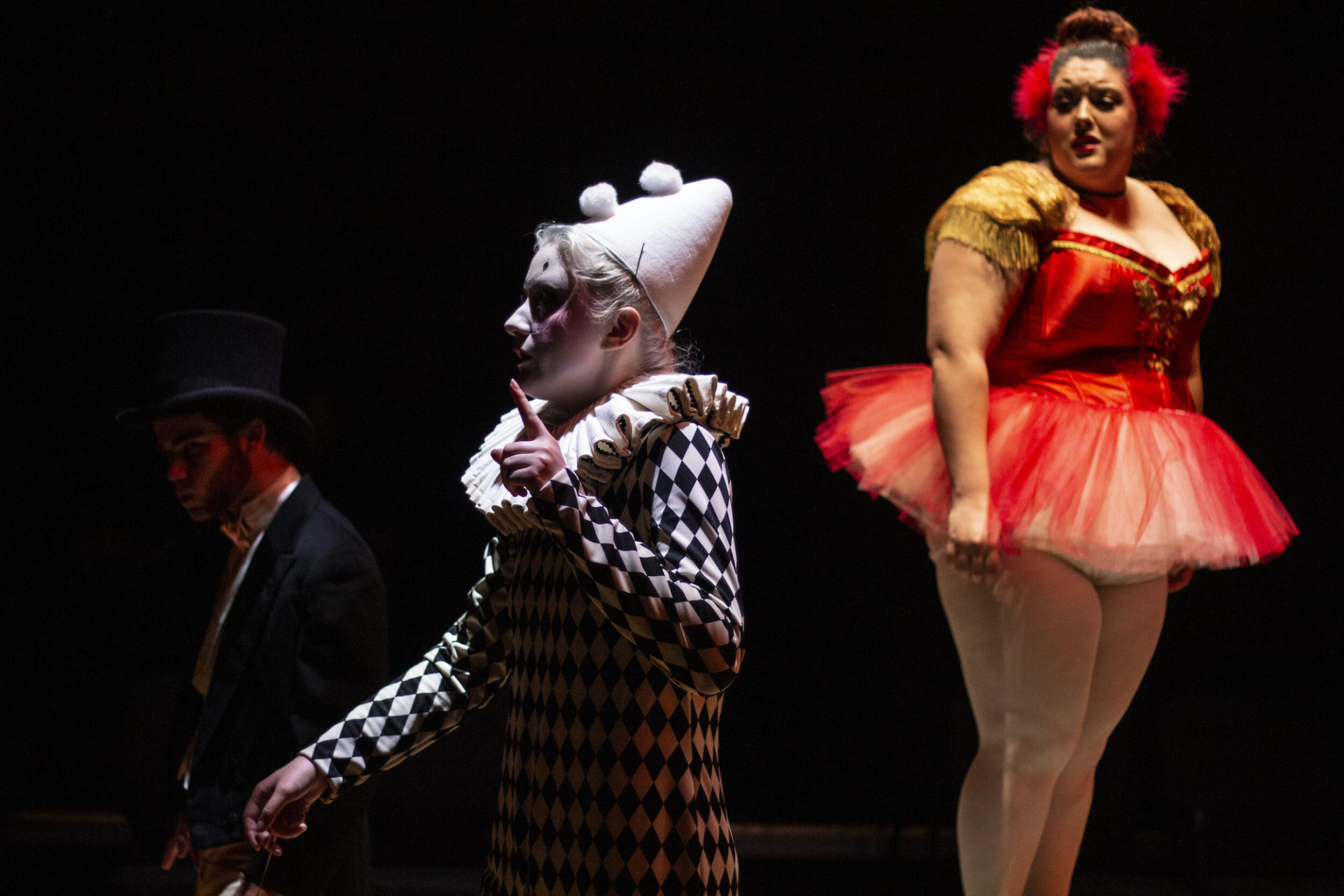When I asked Vivian Krishnan to tell me about herself, she described herself as “an artist and art advocate, wannabe homesteader, and mother of chickens.” This does not even begin to cover her many talents and forms of art-making. Krishnan is a costume maker, she does printmaking, she works with textiles, and paints watercolors; she creates comics, and she has even authored and illustrated a children’s book. I recently spoke with Krishnan about her various creative outlets, here’s what she had to say:
Some responses have been edited for length and clarity.
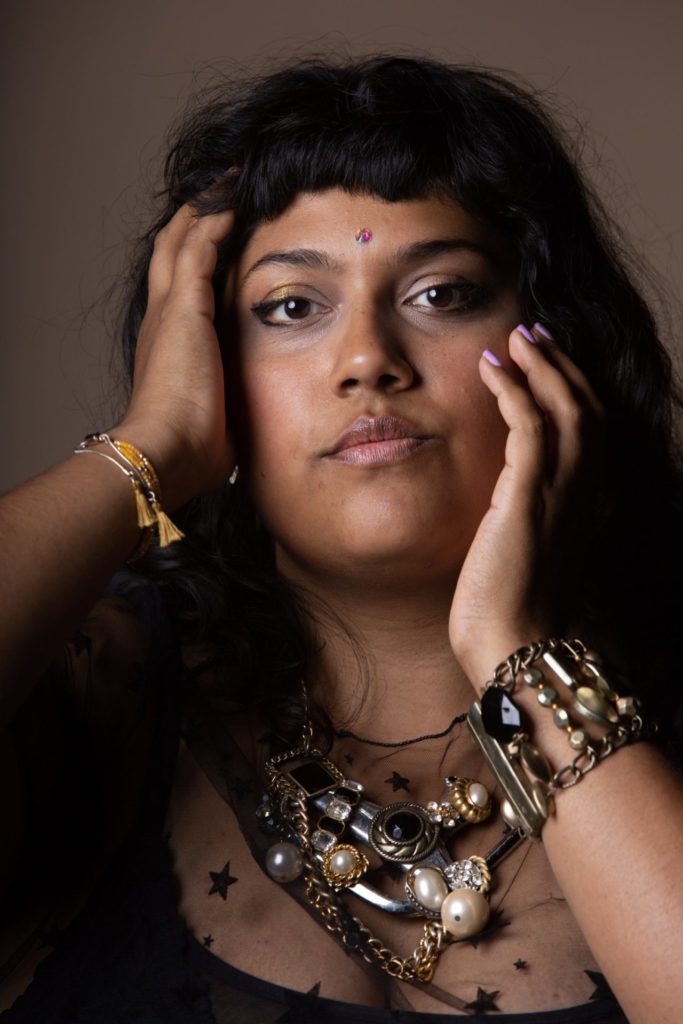
SP: You practice so many art forms: costume making, printmaking, textiles, watercolors, comics — is there one that calls to you the most? Do you find that they are all connected in some way?
Krishnan: Experimenting with different mediums is one of my favorite aspects of art. I feel like my entire life I’ve bounced around between 2D, sculpture, and all things sewing. The thread that connects my work is definitely storytelling and self expression.
SP: Let’s talk about the costume making: how did you first get into this?
Krishnan: Sewing has been a major part of my life since I was just a kid. My aunt was a spectacular quilter and made me a little “Vivian Doll.” The doll was a really sweet, brown doll with black yarn for hair, she went everywhere with me. My aunt made clothes for her and that turned me on to learning to sew for myself, the Vivian Doll, and my barbies. Growing up my mama always made my costumes for Halloween, Ren Fair, Prairie Days, you name it! In high school things really picked up and we would work together on dresses for school dances.
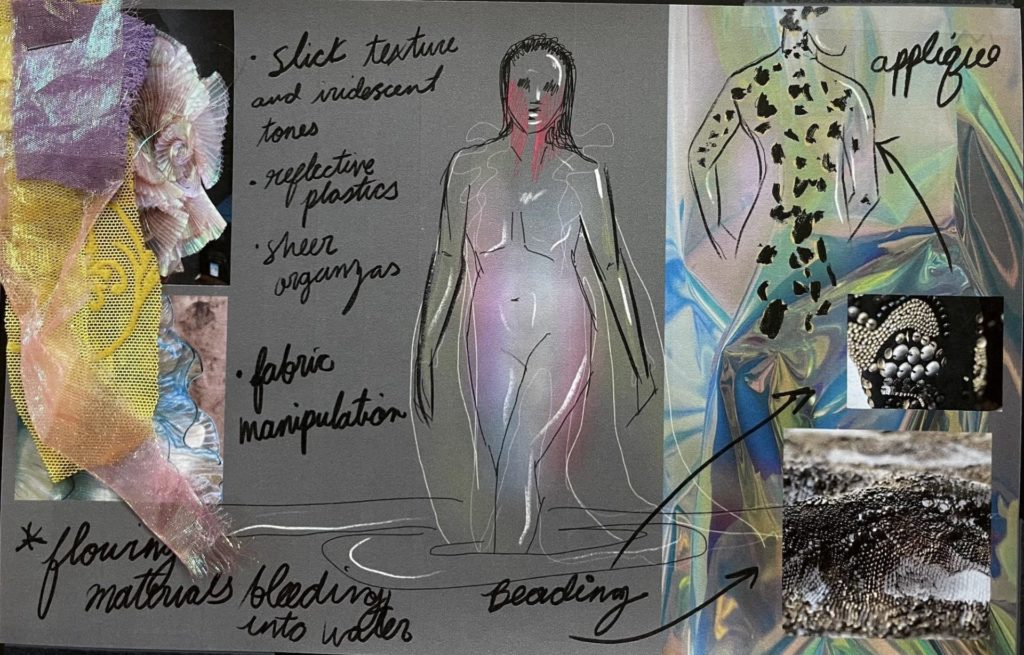
SP: When you are working on a new production, can you walk us through your process of developing the costumes? Is there collaboration with the actors, the director? How do you find the fabrics and materials?
Krishnan: Costume design can be such a rollercoaster of a journey. Once I get a script or libretto, I’ll typically read and jot down notes. It’s a very quick gut reaction at first, just absorbing the story. The mood of the story and characters will inspire concepts, time periods, and themes. Sometimes this takes more time. At the first production meeting, I’ll bring my ideas and see how they work with the director’s initial concepts if they have any, as well as hearing from others who might be involved at this stage in the process: lighting, scenic, props, sound. Some directors will have a strong idea from the start but I’ve worked with a lot of directors who come in with open ears and mind. This might be my favorite part of design. The back and forth collaboration and problem solving. We each have our imaginations running wild and we need to somehow find ourselves in the same universe. Costumes take up a lot of visual space which means that world building can rely heavily on what performers are wearing. Next up is deep research, watching films, listening to music, and absorbing as much information that I can. I’ll start digging through swatches of fabrics and begin sketching. I really enjoy fabric shopping in person, which isn’t always easy to do in the Champaign-Urbana area. I’ll typically make a trip to Chicago, LA, or any big city I’m passing through and find their fabric district. It can be super overwhelming to be surrounded by so much texture and color which is why swatching and sketching acts as a guide for shopping. If my budget is small, I’ll definitely thrift and repurpose as much as possible.
SP: What is your all-time favorite production that you’ve created costumes for?
Krishnan: This is a tough one, but I’ll go with Elephant’s Graveyard, which was directed by Latrelle Bright and performed at Parkland. Small, lower budget shows have this power of forcing ingenuity and resourcefulness on you. It’s a period piece that involves themes of captivity, violence, and fading memories with the whimsical aspects of a traveling circus. It required research, distressing, building pieces from start to finish, and working with some incredible people. That show was the first show I did that really introduced me to the C-U theatre scene outside of the University [of Illinois]. Not a huge production, but waves of emotion in the storytelling.
SP: I imagine with costumes lots of things could go wrong. Do you have any funny or memorable stories to share?
Krishnan: Oh goodness do I have stories…but here’s a lighthearted one. There was a dance piece I designed at Krannert [Center for the Performing Arts] a few years ago where all the costumes were black and white with a couple of pieces that were red… I was working with a really awesome wardrobe crew of undergrads, we were short staffed and really tired. Fast forward to the next day and all the costumes were tinted pink. Laundry got mixed up. It might have been a big deal to others, but things happen and the lighting was already kind of red so it really wasn’t noticeable on stage anyway!
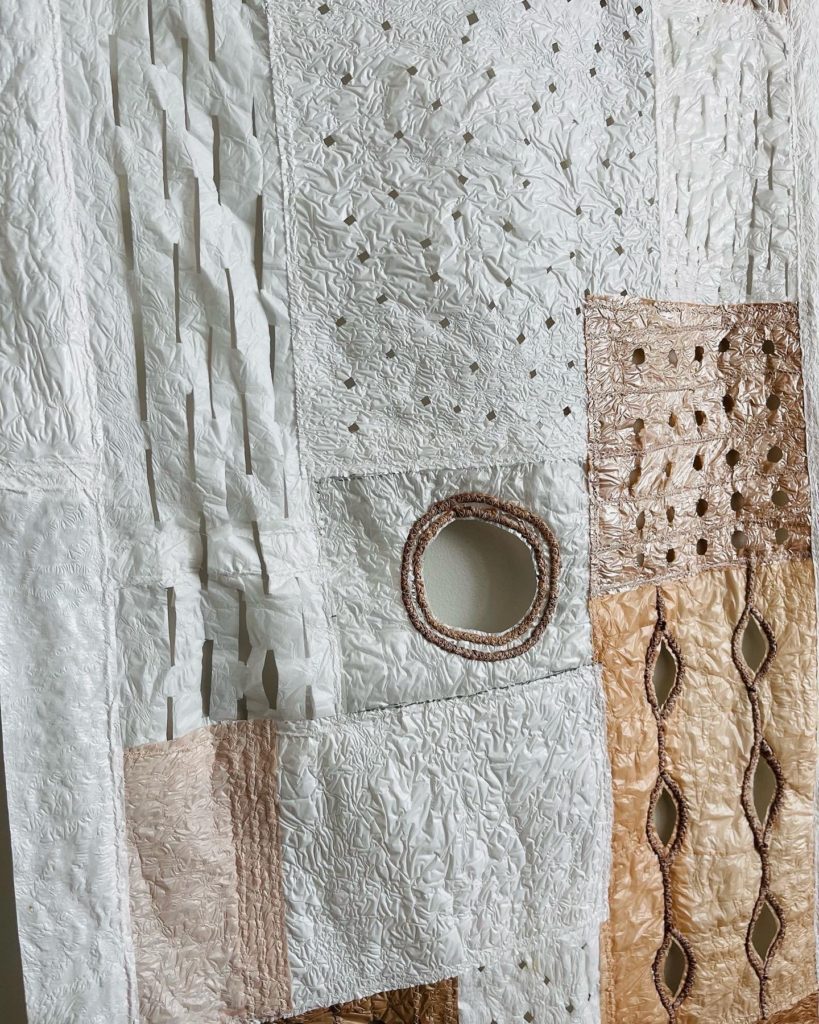
SP: On your website, you have this amazing quilt wall-hanging made from plastic bags. What inspired this? Was it difficult to work with plastic in this way?
Krishnan: Masi in Nature was a big installation piece I made for 40 North’s Great ARTdoors. I had been experimenting with paper quilts right before this and thought I’d try out the plastic. While I was in undergrad in Durango, CO I actually did a lot of wearable art made from recyclables. The art department put on a fashion show, and I created a collection of lingerie made from recycled plastic bags, packing peanuts, newspaper, yellow pages. It was such a rewarding experience to collect and hoard hundreds of used grocery bags and turn them into something gorgeous. When I got involved in theatre, I took a break from the plastics but recently it has found its way back into my work.
SP: I really enjoyed the Personal Tappa Motifs screen-prints on your website. Can you describe your process when you are creating something like this?
Krishnan: Recently, I’ve been looking into how I’d like to express myself when it comes to my mixed-race background. Growing up in the Pacific and having most of my family in the South Pacific, tappa has always been a backdrop. While working on pieces that involve my personal motif, I look for symbols in my life that can create patterns. It’s important to tap into my South Indian blood as well as my own experiences. These designs are layers of stories, and one layer at a time describe specific moments or phases of my life.
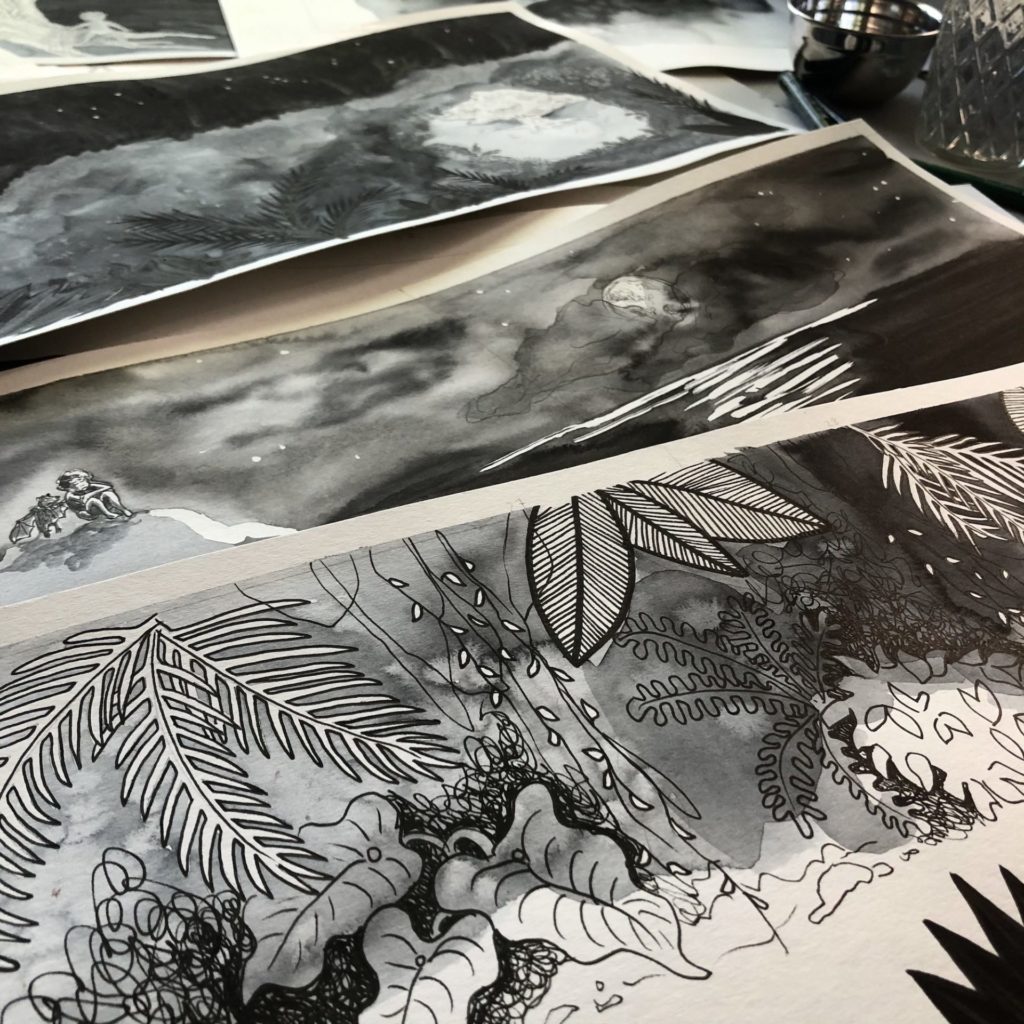
SP: In addition to everything else you’ve done, you’ve also written a children’s book — that’s amazing! What inspired you to write Kula in the Sky?
Krishnan: Kula in the Sky is so, so close to my heart. Early stages of this story actually started while working on traditional costume design research for a project. The story that formed in my mind kept expanding and my costume professor, Olga Maslova, convinced me to run away with it. The story and illustration process has been part of my own healing journey and it’s a book that both adults and kids can enjoy. I’ve written drafts for two more books and I’m really hoping I can move forward with illustrations!
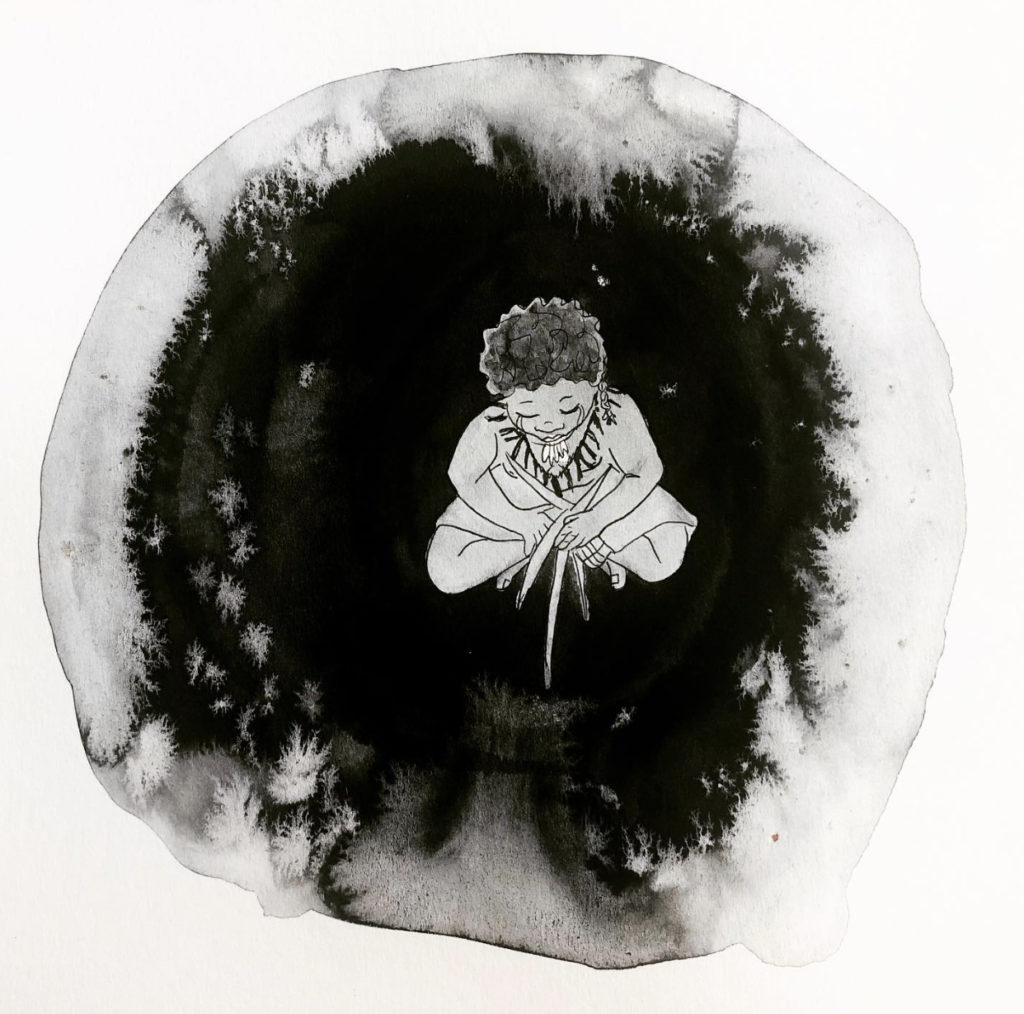
SP: With having so many different art forms at your disposal, do you often have multiple things going at once? Do you find yourself maybe doing more printmaking for a while, then taking a break with creating comics, for example?
Krishnan: Oh boy! Yes. This is a natural flow of expression for me. When I feel like chilling out and just doing something a bit more mindless, I’ll work of painting and still life drawings. Those moments I have a lot more going on in my mind and just need to get thoughts out… that’s when I tend to write or scribble down ideas. If I’m feeling super motivated, that’s typically when I work on projects involving sewing or when I take on theatrical productions.
SP: What have been the most rewarding and most challenging projects you’ve completed to date?
Krishnan: Hands down the most difficult and gratifying project I’ve done is Kula in the Sky. No way around that. The process of writing a concise plot that’s filled with emotions and research for a younger audience was hard. Sketching, story boarding, final illustrations and edit. Wow, so much work! It’s the project I’m most proud of.
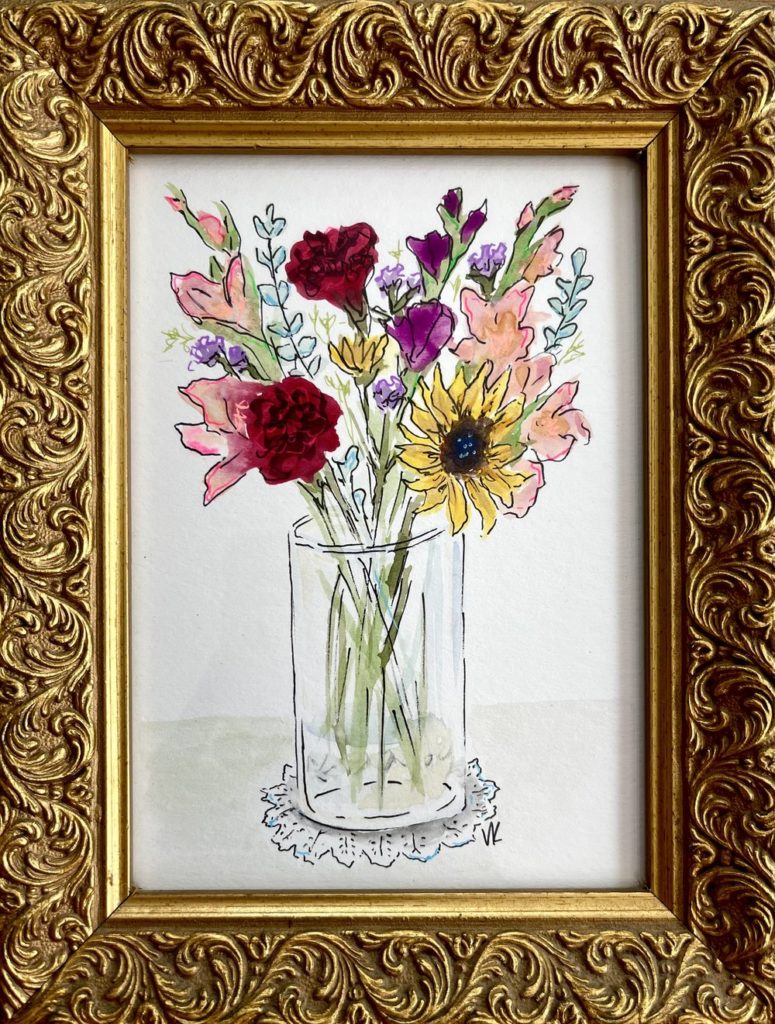
You can check out what Krishnan is up to on her website and Instagram. She will also be teaching a late morning Whimsical Watercolor Workshop at Delight Flower Farm in August, and later this year she will be designing costumes for House of Desire at The Station Theatre.








